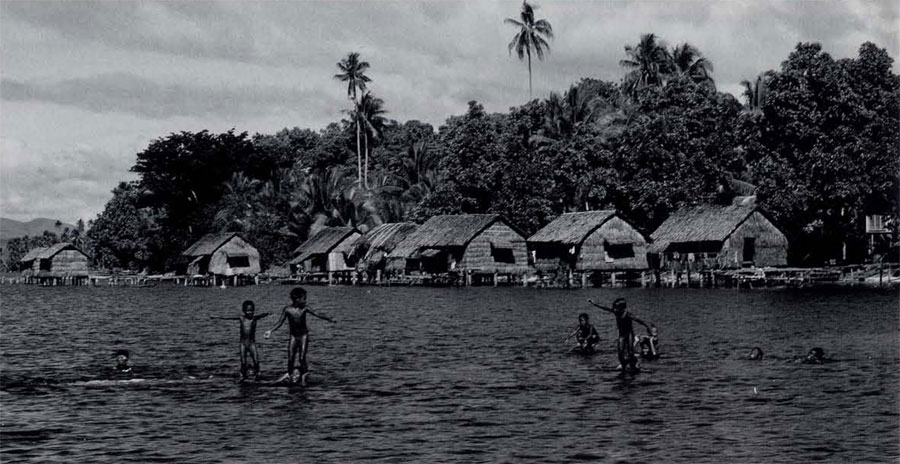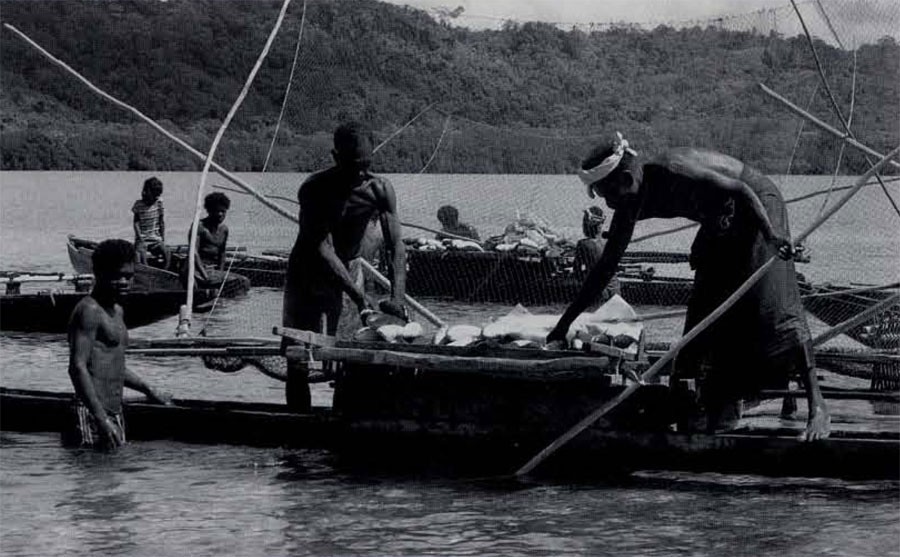
Pere is the home of the largest and most powerful clan on the south coast of Manus. In 1928 it held about 240 persons living in 45 palm-thatched houses built over a tidewater lagoon. Located about a quarter-mile from the shore of Manus Island, the village lay inside a coral reef that protected it from the sometimes storm-tossed, always shark-infested Bismarck Sea.
Shortly after World War II the Manus people living along the south coast rebuilt villages on the shore. Pere and its neighboring village of Patusi united as one village, with a population that, until recently, has numbered about 500. The houses they built on land closely resembled their traditional houses, whose raised design enhances circulation and provides convenient storage area for coconut shells (the fuel used for smoking fish), extra poles, thatch, fish nets, and even outboard motors that are no longer working. Fishing has been and continues to be the chief economic resources of these coastal peoples.

